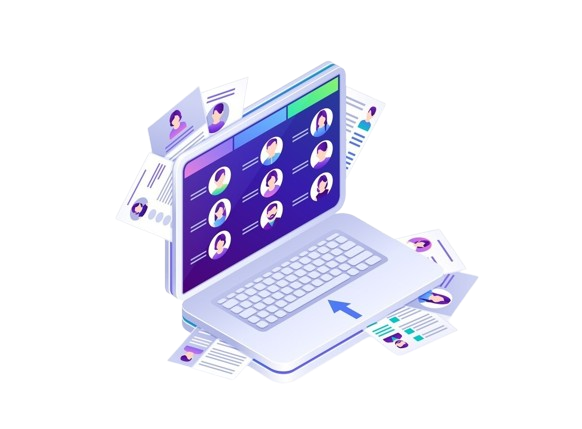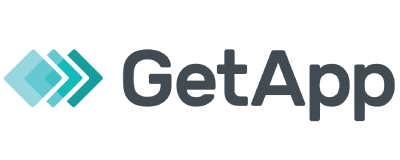Recruiters are under pressure to fill roles quickly without sacrificing quality. This guide explains what AI sourcing is, how it fits into modern talent acquisition, and which tools are driving adoption. You will see measurable benefits, from shorter screening cycles to higher candidate engagement, and practical steps to implement AI responsibly. We also highlight emerging trends and how to position your hiring strategy to stay ahead.
What is AI Sourcing?
AI sourcing applies machine learning and related techniques to identify, enrich, and prioritize potential candidates at scale. Typical inputs include professional networks, resumes, public profiles, and internal databases; typical outputs include ranked candidate lists, enriched profiles, and outreach suggestions.
The Benefits of AI in Recruitment
In 2024, SHRM reported that AI use in HR is most common in recruiting, interviewing, and hiring (65%).[1] LinkedIn data shows AI‑assisted outreach messages have a 44% higher acceptance rate than non‑AI messages.[2] For example, a 2024 research prototype demonstrated an automated resume screening system that was 11× faster than manual screening while still achieving an 87.7% F1 accuracy.[3]
Using AI for Sourcing
Here are some of the challenges and how AI effectively resolves them.
Sourcing beyond your connections and job boards
If you do not have the budget to advertise open roles on job boards, you can use Manatal’s Sourcing Hub feature and access to more than 600 million external talent pool, and filter by skills and location. You can also use the AI Recommendation feature (more information below) to search for the right candidates for your open roles. After selecting potential candidates, you can immediately put them into your internal database for future roles.
On the other hand, People‑Match AI Chrome extension enables you to source candidates directly from more than 10 platforms, including LinkedIn, LinkedIn Recruiter, GitHub, SEEK, Xing, Naukri Resdex, and more. The extension automatically parses public profile information into the relevant fields of a candidate’s Manatal profile. This means you can create candidate profiles, organizations, and contacts directly from supported websites.
Finding the right talent
As mentioned above, you can use the AI Recommendations feature to identify the best talent for a given job quickly. It compares candidates’ skills, location, positions, education, and more to the requirements of any given job and ranks candidates based on the criteria you select.
{{cta}}
Automate job ads and messaging
Use AI to generate job descriptions and personalized outreach, then review before posting or sending. Platforms such as Indeed and LinkedIn now provide AI‑assisted job specs, candidate matching, and messaging.
Elevate candidate experience with automation
Deploy chatbots or asynchronous video screens to answer FAQs, schedule calls, and collect responses at any time. Enable candidates to respond on their own schedules while recruiters review responses when convenient. [Hirevire] Disclose AI use and provide a human contact for follow‑up.
Tip: Where possible, offer a non‑AI path (e.g., live scheduling link) to meet accessibility needs.
Governance and Risk Considerations
Operate under a documented policy that covers:
- Data minimization and consent. Only process data needed for hiring; obtain appropriate consent for data enrichment; honor deletion requests.
- Explainability and auditability. Keep audit logs; be ready to explain ranking factors to candidates and stakeholders.
- Fairness controls. Run periodic adverse‑impact checks; standardize structured interviews; keep humans in the loop for consequential decisions.
- Regulatory alignment. Track AI‑in‑hiring rules in key jurisdictions (e.g., bias‑audit requirements, disclosure obligations). Coordinate with legal and privacy.
Future Trends in AI-Powered Recruitment
The future of AI in recruitment is anticipated to significantly impact the talent acquisition landscape. Here are key trends that you can anticipate.
Widespread Acceptance & Growth
- Over 65% of recruiters use AI in their hiring process, with 87% of companies incorporating it overall.[4]
- The global AI recruitment market stands at around $661 million (2024), with projections reaching $1.12 billion by 2030.[4]
Enhanced Screening & Matching Capabilities
- AI tools are used by 76% of recruiters for resume screening, and handle 60% of initial candidate interactions via chatbots.[5]
- LLM-based resume screening frameworks have proven to be 11× faster than manual methods, achieving an F1 score of 87.7%.[3]
AI Agents in Initial Recruiting Stages
- Virtual recruiter AI agents (e.g., “Recruiter Jamie” or “Robin”) now conduct initial phone or video screening interviews and pass summarized evaluations to human recruiters.[6]
- LinkedIn’s new AI hiring assistant automates job description creation, candidate outreach, and scheduling. In early tests, AI-crafted outreach messages yielded a 44% higher candidate acceptance rate than standard emails.[7]
Improved Decision-Making & Fairness
- AI-driven analytics help 63% of HR leaders make better decisions, and 90% of companies report measurable productivity gains from their AI in HR initiatives[5].
- In trials, using AI in early-stage interviews reduced sentiment-driven bias by 41.2%.[3]
Personalization, Talent Pipeline & Strategic Sourcing
- AI will increasingly enable hyper-personalized candidate journeys by adapting outreach, assessments, and content to each individual’s behavior and preferences.[8]
- Predictive analytics will further refine candidate sourcing and matching, making profile-job fits more precise and enhancing talent pipeline management.[8]
Discover how technology is transforming hiring by exploring our in-depth guide on AI recruitment.
Conclusion
In conclusion, AI sourcing is becoming a standard part of recruitment, helping teams work more efficiently and make decisions based on data. By using machine learning, natural language processing, and predictive analytics, AI can reduce screening time by up to 75%, improve productivity by 60%, and support more personalized communication with candidates. As more than 65% of recruiters are already using AI in their processes, tools like Manatal provide a single platform for sourcing candidates, enriching profiles with additional information, and scoring them based on job requirements. This integrated approach helps recruiters manage high volumes of applicants and maintain a consistent, informed selection process.
Frequently Asked Questions
Q: What are the top AI platforms tailored for recruiter-focused sourcing?
A: Leading platforms include Manatal, LinkedIn Recruiter, and HireEZ. These tools use AI to scan profiles, resumes, and social platforms, delivering precise candidate matches, automating outreach, and building talent pipelines. Their integrations with ATS and CRM systems also help recruiters streamline workflows from sourcing to hiring.
Q: Will AI replace human recruiters?
A: AI can automate repetitive and time-consuming tasks like resume screening, initial outreach, and interview scheduling. However, human recruiters remain essential for strategic decision-making, relationship-building, negotiation, and cultural fit assessments. In practice, AI complements rather than replaces recruiters, allowing them to focus on higher-value activities.
Q: How can recruiters ensure AI sourcing is fair and unbiased?
A: Choose AI tools that offer transparency in how they score and recommend candidates. Regularly audit results for patterns of bias, train models with diverse datasets, and combine AI insights with human judgment. This ensures decisions are data-driven without losing fairness and inclusivity.
Q: What are the disadvantages of AI recruitment?
A: While AI brings efficiency, it also poses challenges: potential algorithmic bias, limited ability to assess soft skills, privacy concerns from data collection, and the risk of over-reliance on automation. Recruiters should mitigate these by combining AI with human oversight, securing candidate data, and maintaining personalized engagement.
Citations





.png)






















.webp)

.webp)

.webp)
